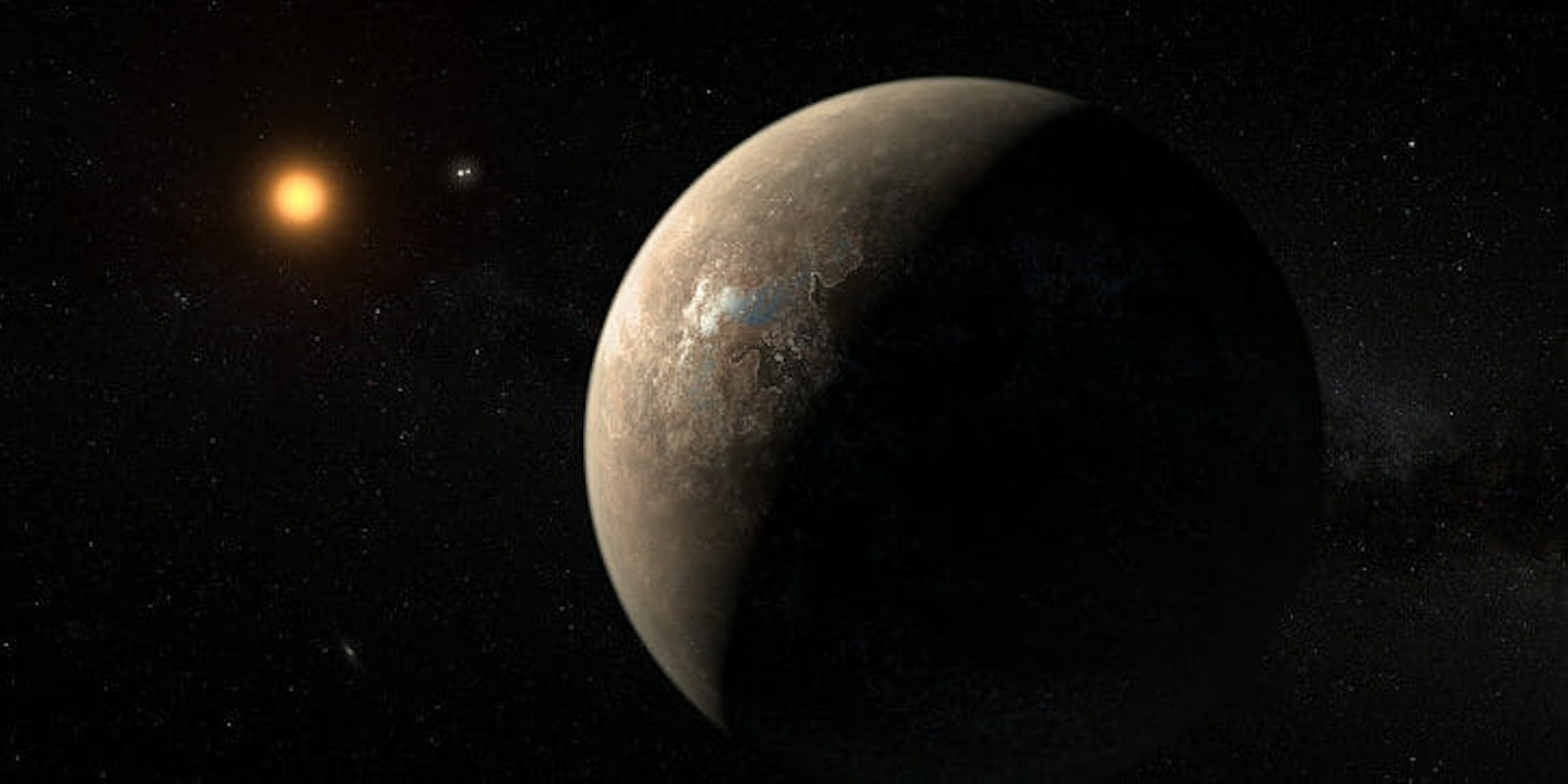BY ALASDAIR WILKINS
Over the past decade, astronomers have discovered our galaxy is teeming with billions of exoplanets, so just finding a new world around some distant star isn’t all that exciting anymore. But how about a habitable, Earth-like world located around our closest neighboring star?
The planet in question is Proxima Centauri B, named for the star around which it orbits. Discovered in August 2016, the planet is about one-20th the distance from its star as we are from the sun. That’s good, though, because Proxima Centauri is a red dwarf star, so a planet needs to be nearby to get the same kind of warmth we receive from the sun. It’s thought that the planet, which is estimated to be about 1.3 times the mass of Earth, is within the habitable zone of its star, meaning at least parts of its surface are warm enough for liquid water to exist.
To figure out whether the planet could indeed support life, researchers need to know more than just its cosmic location. Also important is the question of whether the planet has the atmosphere and climate necessary for liquid water to endure on the planet’s surface, giving life the eons it needs to develop and evolve. Researchers at the University of Exeter explored this question in an article published in this week’s issue of Astronomy and Astrophysics, in which they simulated what the planet’s climate would look like if it had the same mix of gases as Earth’s atmosphere and if it had a simpler atmosphere of just nitrogen with a bit of carbon dioxide. They also considered the different forms the planet’s orbit could take—whether it would be tidally locked, only showing one face of the planet to the star, or in an orbital resonance similar to Mercury’s.
When they assumed the planet is tidally locked with an Earth-like temperature, the cutting-edge climate model they used—which has previously been used to study and test Earth’s climate—found that temperatures varied from a high of 63 degrees Fahrenheit on the day side to a low of -190 on the night side. The day side would likely be covered by a thick cloud layer, reflecting sunlight and keeping the temperatures a bit lower than they might otherwise be.
It appears the most liquid water would be available when the planet is in a Mercury-like resonance. Other scenarios showed similar results: The planet would be a bit chillier than ours, but more than warm enough for liquid water to exist. Also exciting is the fact the researchers’ findings track closely with a modeling effort put out last year, which suggests Proxima Centauri B’s prospects of habitability are more than just the result of any one particular climate model.
It remains very early days in the study of Proxima Centauri B, but it seems possible, even plausible that a planet orbiting our nearest stellar neighbor is habitable. Of course, if we ever want to visit it—or even just keep studying it longer—we probably should make sure we keep habitable the only Earth-like planet even closer than that one. You know, the one we’re all on right now.
